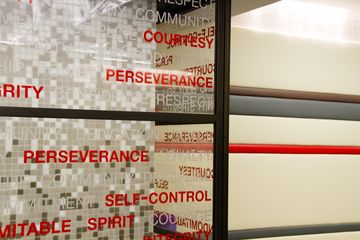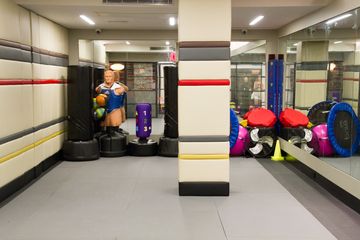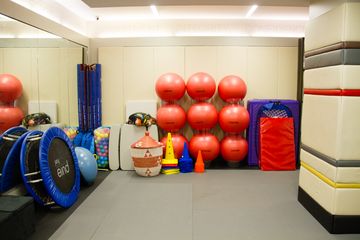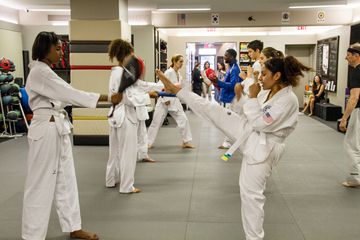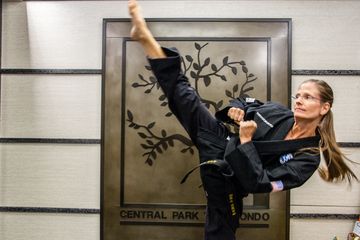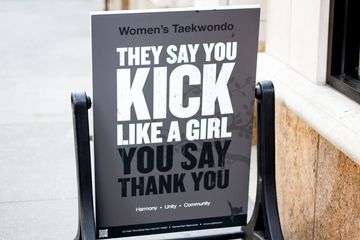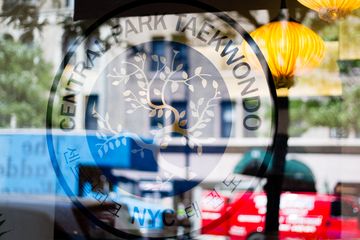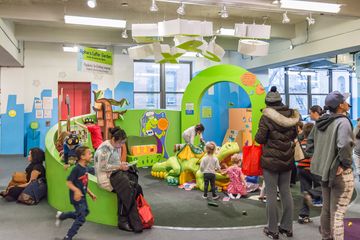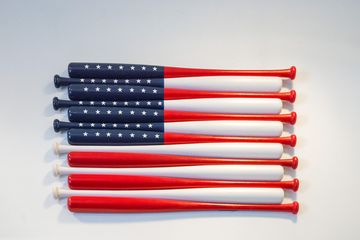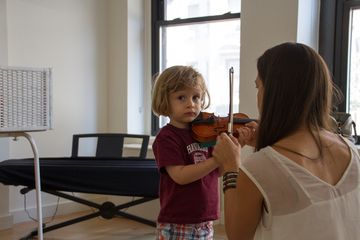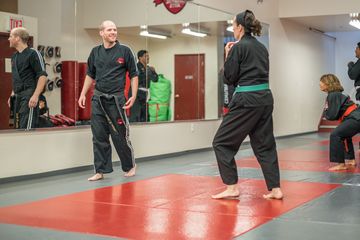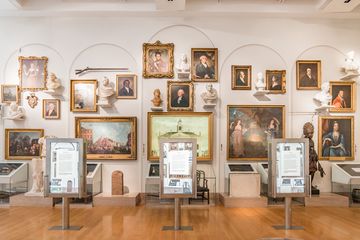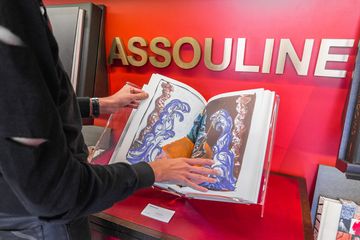
As Master Teresa Throckmorton guided me through Central Park Taekwondo and invited me to take off my shoes, I was struck by how immaculate everything was. "I make sure it's very clean," Teresa told me, and took me past a group of women practicing the martial art to a smaller studio separated from her office by a glass wall. There were toys on the floor from the camp program that had just left, as I was visiting during the summer months. "It's a real community," Teresa said, telling me about the different options for all ages. "People come and they don't want to leave."
Teresa is a typical New Yorker in her impressive use of space. Along with the smaller studio in front of her office, the main room has partitions that can be dragged across to create smaller spaces. She has seven full-time instructors who have been doing taekwondo for most of their lives. She proudly told me that she offers each of them benefits, vacation, and sick leave.
The glass that separates her office is covered with words in red: "courtesy," "integrity," "perseverance," "self-control," and "indomitable spirit." These are the central tenets of taekwondo, a word that means "the way of the hand and foot" in Korean. Teresa explained to me that taekwondo is not just a physical practice, but also a mental one. As a fifth level black belt, she is a well-qualified teacher (Any degree above fourth indicates someone who has dedicated his or her life to teaching martial arts). She grew up with brothers in an active family on a farm in Virginia, and so she was introduced to a series of sports before landing on taekwondo as her passion. She has also introduced the martial art to her children. I met eleven-year-old Caden, a black belt who has been studying taekwondo since he was two years old, though he now splits his time between martial arts and baseball. Teresa's eight-year-old son is also a black belt and her little girl is a third degree red belt. "It was never a choice for them," Teresa said with a grin. As for Teresa, she is still training. A certain number of years must pass before you can increase your belt degree, but Teresa proudly told me, "By the time I am seventy-six years old, I will be ninth degree black belt grandmaster."
Teresa makes sure that everyone in Central Park Taekwondo - and in her family - is certified through the Kukkiwon Taekwondo World Headquarters, so that their belt status is recognized everywhere. She also follows the rules of the World Taekwondo Federation School whenever her students compete. However, taekwondo is not just about gaining belts and competing. Teresa believes that taekwondo can be beneficial to anyone, even those who have never participated in sports. "What I love about this place," she told me, "is that you can come with no experience and end up a black belt one day." She also told me that taekwondo helps people with challenges such as ADD or ADHD, since it can build mental discipline and self-confidence. "A lot of therapists suggest taekwondo," Teresa informed me. Teresa especially suggests the martial art for children, since taekwondo helps teach principles of respect and builds a foundation of physical concentration.
Teresa is very pleased with the fact that she has gained so many students in such a short amount of time. She opened Central Park Taekwondo in August of 2011 after training and working at another school in the area for seventeen years. The studio has been expanding ever since, with students traveling from Harlem and Brooklyn. "We're hoping to buy a new building, since we have grown really quickly in four years," Teresa said. She wants to remain on the Upper West Side, where people can find her. The only advertising she uses is word of mouth and the sandwich board outside, which reads "They say you kick like a girl, you say thank you!" When I expressed my approval, she let me know that the school is split evenly between men and women, which is unusual for a martial arts studio. "I think it's because I'm a female owner, so people feel connected to me," she said. She is very proud to have created such a tight-knit community. As I was leaving, she told me, "Our intention is to make anyone who walks in feel welcome, empowered, and strong."
